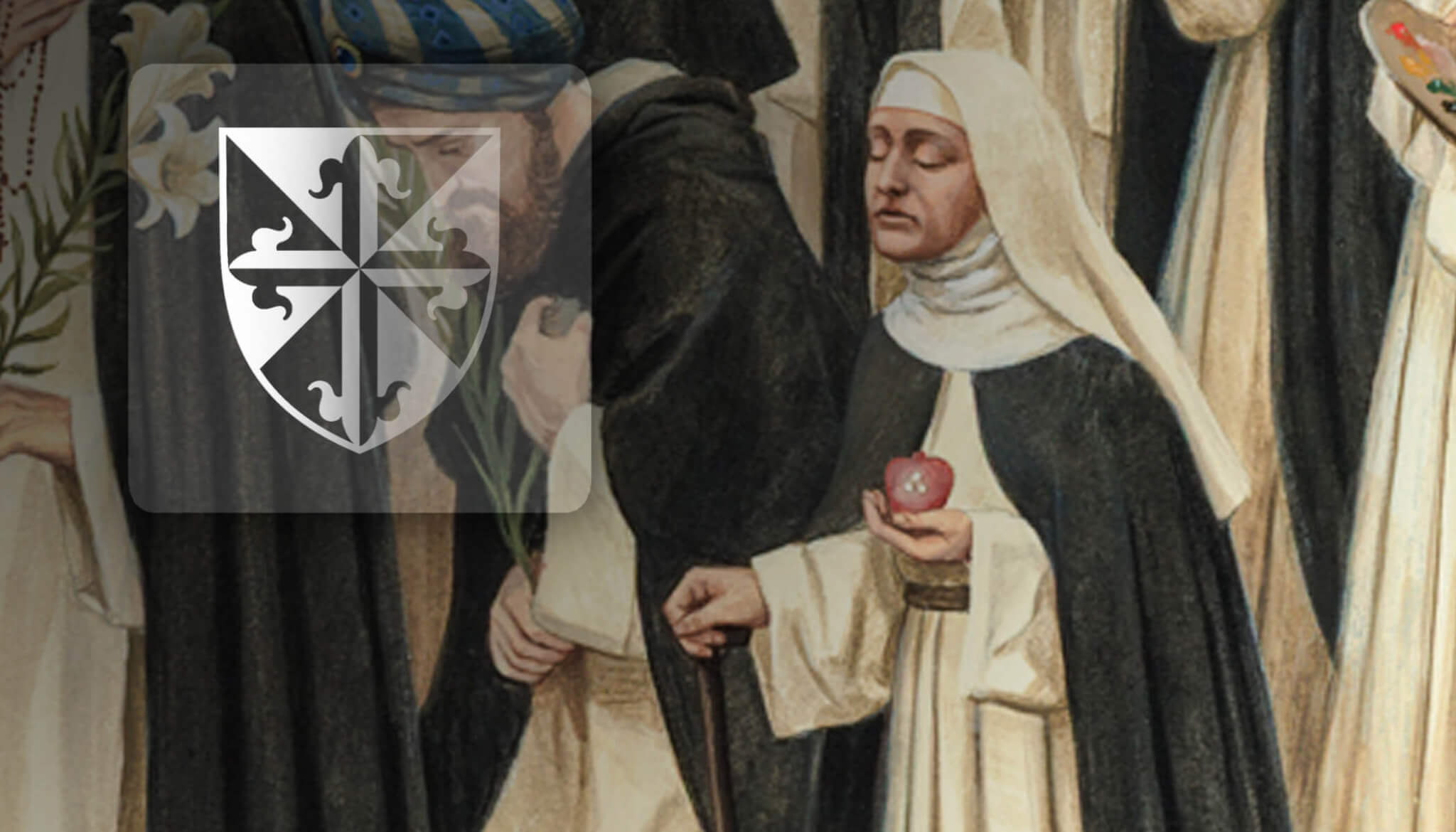
The cult of Margaret initially flourished in the places that had been the theatre of her earthly life: Città di Castello, where the Dominican cloistered woman died and her sacred remains are still preserved, and the villages of the Metauro Valley (La Metola, Mercatello and Sant’Angelo in Vado), where she spent her early years. If this was the original womb of a memory tenaciously cultivated in the dioceses of Umbria and Marche, a decisive role in the promotion of the cult was played by the Order of Preaching Friars, who from the beginning of the fourteenth century made Blessed Margaret the symbol of their pastoral presence in Città di Castello, and of the strong bond that the local convent had with the citizens.
But the Dominican Order also favoured the spread of the devotion of the Blessed from the original humus to a wider public. Without obliterating the patronal values of a cult deeply rooted in the communities to which they belonged, the Preaching Friars enhanced a model of female holiness charged with universal resonance and capable not only of lasting through time, but also of imposing itself at a supraterritorial level. This is demonstrated by the twentieth-century flourishing of the Margaretite cult in the United States and the Philippines. Considered in its entirety, the dossier of literary and iconographic sources, mainly attributable to Dominican patrons, allows us to reconstruct the path of a memory characterised by a singular diachronic resistance in its double articulation between the particular and the universal.
The first testimonies date back to the years between the 14th and 15th centuries and are placed under the aegis of Fra Tommaso da Siena, known as Caffarini. As head and vicar of the Italian mantellate, he was charged by the Master General to work to obtain the recognition of the Order of Penance, or Third Dominican Order, from the Apostolic See, a task to which he dedicated himself in the years 1400-1405. Complementary to this objective was his commitment to obtaining the canonisation of Catherine Benincasa, the most famous Dominican cleric, whom the observant wing of his religious family had chosen as the symbol of the reform. In the convent of S. Giovanni e Paolo in Venice, where he lived from 1395 until the year of his death in 1434, he set up a scriptorium, a forge for copying and distributing the legendae, in Latin and the vernacular, of the holy women who had served in the Order of Penance, and worked to obtain canonical recognition of their way of life. Caffarini’s interest therefore represented a qualitative leap from a cultic point of view, because it favoured a broadening of the horizons of devotion to Margaret even outside the original niche of Typhera. The Blessed became officially part of the synastry of the Order, as a universally valid model of tertiary holiness.
The Sienese friar’s propaganda efforts were not limited to written testimonies, but also had a corollary in artistic patronage. This apologetic programme was to find its most pregnant iconographic transposition in the important altarpiece by Andrea di Bartolo (already known as the Master of the Dominican Effigies), conserved in the Accademia Museum in Venice, but coming from the Dominican monastery in Murano. In the prestigious gallery of the polyptych Margherita occupies a place alongside the ‘tertiaries’ Giovanna da Firenze, Vanna da Orvieto, Caterina da Siena and Daniella da Orvieto. These older representations also have a “founding” value of the image of the blessed, already fixed in its essential elements. If she too, like the other penitents, wears the Dominican habit, and holds in her hands the lily (symbol of virginity) and the cross, the peculiar sign of the beata of Typhera is her heart. This attribute would permanently accompany her iconographic figure and make her immediately recognisable even in group representations, such as the famous predella in the National Gallery in London, in which Fra Angelico celebrates the triumph of the Dominican family, already projected into paradise glory. The complete insertion of Margaret in the Order’s Sanctuary is confirmed by a remarkable painting from the convent of St. Dominic in Città di Castello, where she is depicted together with Margaret of Hungary and Agnes of Montepulciano. Although she has a rayed nimbus, the Perugian artist Ludovico di Angelo Mattioli does not give her any less dignity than the two holy nuns, recognisable respectively by the royal crown placed on the ground and the lamb. Margaret is holding her heart in her hand, but it is worth noting that this attribute is enriched here by an important detail: three stones are clearly engraved on it, an allusion to the precious finds that were discovered during the autopsy carried out immediately after her transit.
The beatification at the beginning of the 17th century gave an incentive for the promotion of the cult and thus also for the elaboration of the literary memory and artistic representation. However, in this period, the friars’ initiative also led to numerous attestations outside the Umbrian-Marches niche, not limited to the Italian and European area. Thanks to their vast missionary network, Margaret also reached the New World, as shown by some works of art found in Mexico and Peru.
In the twentieth century, it was again the Dominican initiative that spread the cult to the United States and the Philippines. The biography of Father Bonniwell op, which offered a moving portrait of Blessed Margaret of Castello, also known as Little Margaret, was an effective means of promotion in English-speaking countries. In recent years, the growing popular devotion has found a formidable echo in the digital communication circuit. It is also worth noting that it is in this context that a kind of reinvention of the image has taken place.
Overseas iconography presents a slightly different face of the blessed, perhaps less idealised than Renaissance and Baroque portraiture: in the contemporary posters, depictions inherited from the past coexist with attempts to offer up-to-date representations, closer to today’s sensibility, but always alluding to a special maternity of Margaret towards abandoned childhood. In addition to her blindness and her Dominican habit, the iconographic attribute that makes her immediately recognisable is no longer her heart, but her cane, an allusion to her disability, but also to her role as guide on the journey of faith.


